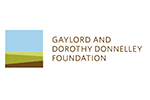The Right to Liberty
INDIAN FREEDOM FIGHTERS IN THE UNITED STATES
Did you know Indians living in the United States were actively involved in India’s freedom struggle?
Modern day Indian Americans keep up to date with events and participate in activities in India through the ease of jet travel and frictionless technologies. Indians living in the United States in the early years of the 20th century were also active participants in developments in India, connected to their countrymen through a shared dream powerful enough to overcome the challenges of distance and circumstance–the dream of an independent India.
Theirs is a fascinating story of commitment to the homeland that transcended all religious, regional and class distinctions. Many jeopardized their futures and risked their lives as they established global networks to mobilize resources, launch attacks against British rule and shape public opinion.
Farmers and laborers hailing predominantly from Punjab came to the West Coast of the United States during the late 19th and early 20th centuries. Hundreds of students from India began to arrive at U.S. universities in the early 1900’s. The two groups soon found common cause in the Indian nationalist movement, and directed their energies to promoting armed rebellion against British rule.
Meanwhile, across the nation, activists and organizations chose different routes to freedom for India. Church groups and other American sympathizers as well as Irish nationalists helped raise awareness and promote the cause. By the time World War II loomed on the horizon, the Indian independence movement had gathered momentum across America.
THE DREAM DENIED: FARMERS, LABORERS and STUDENTS UNITE

Sikh workers constructing the Pacific & Eastern Railroad circa 1909. Indian laborers along the Pacific Coast faced hostility and discrimination. (Source: Southern Oregon Historical Society, Medford, Oregon. Photo #1603)
Early Indian laborers experienced great discrimination and ill treatment. They attributed their lack of rights and second-tier status in the United States to the subjugated status of their homeland.

Student revolutionary Taraknath Das (far right, with members of the University of Washington Cosmopolitan Club of which he was president) was a leading organizer of the Indian nationalist movement in the U.S.. (Source: University of Washington Library South Asian Students Cosmopolitan Club)
Students spearheaded early nationalist efforts. Many were inspired by the ideals of the American Revolution. Fueled by donations from wealthy immigrant farmers, the revolutionary ardor of the students and the angry passion of the laborers, the “Hindu”* nationalist movement developed strength along the Pacific Coast. More…
(*“Hindu” was the name applied to all people from the Indian subcontinent, Hindustan, regardless of their religion.)
GADAR: THE CALL TO REVOLUTION

Wanted: Brave soldiers to stir up Gadar in India.
Pay: Death.
Prize: Martyrdom.
Pension: Liberty.
Field of Battle: India.
Founder Lala Har Dayal’s clarion call to armed revolution appeared from time to time in the Gadar (Revolution). The newsweekly, founded in 1913, was the main political education effort of his Pacific Coast Hindustani Association which came to be known as the Gadar Party. The party’s aim was to expel the British from India. The paper’s worldwide distribution inspired volunteers around the globe to establish branches of the Gadar Party. Supported by a German government interested in making trouble for the British, and stirred by rousing Gadar exhortation, more than 6000 Indians sailed to India during 1915 and 1916 in a disastrous attempt to foment revolution. More…
ACROSS THE NATION

Meetings featuring nationalist speakers and writings about the future of India began to inform public discussion in America. (Source: University of California Berkeley Library: Echoes of Freedom)
Although the Gadar movement had weakened, other existing and newly formed organizations, publications and individuals in various parts of the United States increased their efforts for India’s freedom. These more moderate movements appealed to both Indian immigrants and American society and reached a wider audience. They proved remarkably effective in their use of media tactics and in forging collaborations to advance the cause.

Lala Laipat Rai (left) and friends in the United States (1917-1919) were among those building support from influential thinkers and politicians. (Source: Museums of Punjab (www.punjabmuseums.gov.in))
Indian leader Lala Lajpat Rai arrived in 1914 and attracted the support of key intellectuals and African American leaders. Salindra Ghose and Agnes Smedley organized Friends of Freedom for India, which cemented ties with Irish Americans and American liberals, and J.J. Singh, the “One Man Lobby,” courted businessmen, socialites and politicians with his stance that business interests would benefit from India’s liberation.
More…
FREE AT LAST!

Wives and daughters of Punjabi immigrants celebrating India’s first Independence Day in Marysville – Yuba City area of California, 1947 (Isabel Singh Garcia photo)
The the early immigrant farmers and laborers were prevented from bringing wives from India and prohibited by anti-miscegenation laws from marrying white women. Most took Mexican wives and were finally able to purchase property in the names of their American-born children. These personal experiences of injustice fueled their support for the Indian independence movement in America.
The determination, passion and sacrifices of the Indian nationalists across the country helped clear the path to freedom for their homeland on the other side of the world. With American public opinion now clearly in favor of an independent India, the Allied need for wartime support from India and the power of Mahatma Gandhi’s nonviolent movement the stage was set. On August 15, 1947, nearly half a century after Indians in the United States began to mobilize support in America for a free India, British colonial rule of India came to an end. More…
India’s first Prime Minister Jawaharlal Nehru’s landmark speech on the eve of India’s independence captures the essence of India’s freedom struggle.

The Constitution of India, like the Preamble to the U.S. Constitution, begins with the words “We the People…”
Listen to this historical speech, Tryst with Destiny.
![]() Revolutionaries, Friends & Foes
Revolutionaries, Friends & Foes
![]() The Groups, the Events, the Publications
The Groups, the Events, the Publications
![]() Taraknath Das: Correspondence and Writings from the Student Days
Taraknath Das: Correspondence and Writings from the Student Days
SHARE YOUR STORY
Do you know anyone or any place in the U.S. with connections to the Indian freedom struggle? Send us their story. Add a digital photo with a detailed caption if you can. We may post it on our website for everyone to share.
The Indo-American Heritage Museum gratefully acknowledges the research contributions of Lakhpreet “Preeti” Gill, Doctorate Student, Stanford University, towards the development of this exhibit.


















